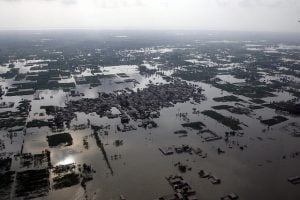Before joining HSBC, Nick Robins was head of SRI funds at Henderson Global Investors. He also co-authored the book Sustainable Investing: The Art of Long-term Performance with Cary Krosinsky.
The General Theory of Employment, Interest, and Money
John Maynard Keynes
The General Theory is essentially a two-fold critique of conventional economic thinking that sadly remains as true today as it did in the 1930s. First, markets do not automatically return to prosperity after a recession, as entrepreneurs do not invest savings because future demand isn’t expected to justify capital expenditure. Second, this problem of expectations is exacerbated by the excessive short-termism of stock market investors.
He goes on to highlight the career risk facing investors who wish to step aside from the “herd”: “worldly wisdom teaches that it is better to fail conventionally than to succeed unconventionally.”
Also see: Can activist shareholders drive a new wave of responsible investing in China?
Keynes was a sustainable investor before his time – though not one that necessarily considered the environmental limits to future returns. He also pinpointed the market dynamics that militate against investors trying to do right thing and invest as if the long-term really does matter.
The Economics of Climate Change
Nicholas Stern, et al
Before the report, climate change was regarded as primarily a concern for scientists and policymakers. Certainly, insurers had raised warning flags for many years and pioneering SRI funds had incorporated climate factors. But it was not viewed as a fundamental problem for the financial market as a whole. In his famous conclusion, Stern highlighted the scale of the challenge, judging climate change as “the greatest market failure ever seen”.
Crucially, the report recommended confronting this market failure with market reform, making sure that the cost of carbon had a price in the marketplace. It helped to build the foundations for the upsurge in investor support for policy action, which by last year’s Durban climate conference had mobilised US$20 trillion in assets behind national and international policy action to prevent catastrophic impacts.
Behavioural Investing and The Flaws of Finance
James Montier
Montier lambasts the way in which financial theoreticians and practitioners have claimed the virtues of science for their abstract notions of “efficient markets” and the “rational man”. This has produced widely-used financial models which exacerbate the underlying tendency of markets to short-termism and instability.
Crucially, these models ignored the low-probability but massive-impact “fat tail” risks that have now come to pass. In the context of climate change, most policy and investor thinking is based on an assessment of the normal distribution of risks; some are now starting to think through the implications of climate’s “fat tails” for investment strategy.
Too often, sustainable investors are urged to be more mainstream. Montier’s work shows why this would be a very bad idea.
Systemic Risk in Banking Ecosystems
Robert May and Andrew Haldane
This paper is the result of a remarkable partnership. Bob May, a professor of zoology and a former chief scientific adviser to the UK government, teamed up with Andy Haldane, director of financial stability at the Bank of England, to examine the theoretical roots of financial instability.
They find that traditional notions of market equilibrium simply don’t hold up empirically. May and Haldane argue that analogies from the world of biology were much more helpful in understanding the world of global financial systems. Perhaps financial markets are more like rainforests: complex but fragile.
To date, sustainable investing has sought to integrate environmental, social and governance factors into decision-making, all the while assuming that underlying financial theories remain intact. Behavioural and biological finance reject this – and in the case of biological finance, offers the sustainability community the chance to draw on its deep understanding of natural systems and apply the lessons to investment strategy.
Unburnable Carbon
The Carbon Tracker Initiative
The core thesis of the original Limits to Growth was the tendency of economic systems to overshoot – that is, when consumption exceeds long-term carrying capacity, prompting either managed decline or collapse. The same can be true of financial markets. The clearest case is fossil fuels, where we have reserves far beyond the climate’s capacity to absorb the resulting carbon emissions.
For many investors, the low-carbon option is the high-risk strategy, involving treacherous politics and volatile technology markets. What the “unburnable carbon” analysis shows, however, is that there are also profound risks for fossil-fuel assets which are currently under-appreciated and under-valued. Furthermore, from an engagement and stewardship perspective, investors should factor long-term climate goals into their assessment of corporate strategies for expanding fossil fuel reserves.
Bonds and Climate Change: the State of the Market in 2012
The Climate Bonds Initiative
To get a robust market baseline, we commissioned the Climate Bonds Initiative to estimate the value of outstanding bonds linked to key climate themes such as clean energy, energy efficiency, sustainable transport, water and waste. The results were highly revealing: US$174 billion in total, a much broader and deeper market than we had expected.
We’re really at the beginning of a new market, which is expected to grow considerably in the future as low-carbon options become more mature and more appropriate for bond investments.
Ultimately, investors find it very hard to think about the long-term. This means that we misperceive financial and environmental risks, leading to the credit crunch and the unprecedented market failure that is climate change.
Thankfully, help is at hand. Behavioural insights enable investors to make decisions based on the real world rather than stylised abstractions; biological finance has considerable unexplored potential to help understand how markets operate as complex systems. The task now is to deliver at the speed and scale that the combined financial and climate crisis demands – and in the process, deliver robust returns for the savers of the world who ultimately underpin the investment market.





